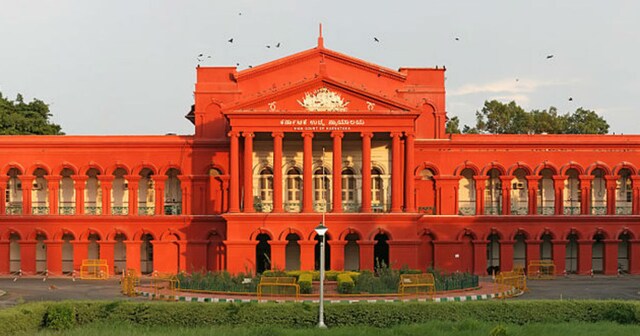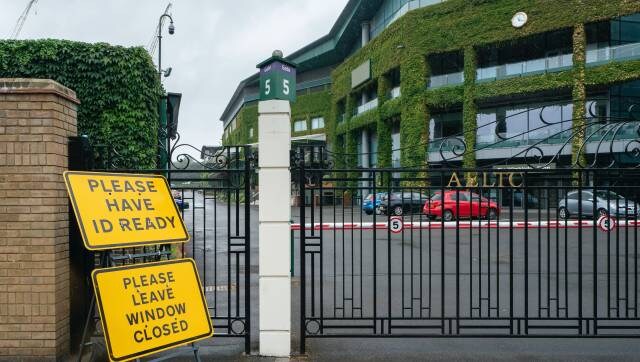Unseen warriors of COVID: No rest for gravediggers in Bengaluru as crematoriums run out of space
At the city's Chamrajpet crematorium, authorities had to put up a 'housefull' sign and families were told to wait with bodies in ambulances to avoid overcrowding
Editor's note: As the second wave of coronavirus infections ravages parts of India, millions of front-line workers and citizens are caught up in the middle, providing their services to distressed families on one hand while trying to cope themselves on the other. This is part four of a series profiling the stories of these people.
As COVID-19 deaths in Bengaluru continue to surge, the situation on the ground is worse than what the government’s data shows. The workers handling the bodies see the worst of it. The toll is through the roof and the death rate is alarming. One of the most populous cities in the country, Bengaluru has been one of the hardest-hit cities by the second wave of the coronavirus
deaths in Bengaluru continue to surge, the situation on the ground is worse than what the government’s data shows. The workers handling the bodies see the worst of it. The toll is through the roof and the death rate is alarming. One of the most populous cities in the country, Bengaluru has been one of the hardest-hit cities by the second wave of the coronavirus .
.
On 7 May, the Karnataka government reported a positivity rate of over 30 percent, and nearly 49,000 new cases of coronavirus .
.
Of these, over 21,000 were from Bengaluru alone. The administration, at the beginning of the pandemic, boasted of the lowest infection numbers in the country. It was so enamoured with its “Bengaluru model” that it dismantled war rooms and disbanded volunteer teams.
Now, the government is scrambling as people are dying. Oxygen is running out at local hospitals and urban public health centres (UPHCs) are running out of sample wells when people come in to get tested. Meanwhile, the graveyards around Bengaluru practically have no space for the dead.
Pramod*, a worker from North Karnataka, is now a gravedigger at the Hosur road Indian Christian cemetery. He said he has been working round the clock for the past two months.
“I usually do construction work, but most of it in the city has all but dried up. My family doesn’t know I’m doing this work (digging graves),” he said.
It’s 11 am, and the bodies have begun arriving from hospitals. It can take up to two hours to properly dig a proper grave. It is simply not possible to dedicate that kind of time to a single grave, Pramod said.
Yohann, a volunteer at the cemetery, helps lift the coffin from the gate until the grave. They wear PPE kits and help the family, especially when there’s no one to help them to lower the body into the ground.
Yohann said that there’s a huge disparity between the number the government is reporting and the actual number of bodies arriving at the cemetery.

The Christian community is now asking the government for more land for burial. Many have been forced to recycle plots due to lack of space. Image courtesy: Alithea Mounika
“On one particular day, we put 10 bodies in the ground. That day, I looked at the numbers in the daily bulletin which said that there were only 10 deaths in the entire state. Can you imagine? We’ve been working at just one cemetary in Bengaluru since August. There must have been a lot more bodies at other cemetaries.”
Jinnium Andrew, one of the other volunteers, said, “As bodies keep arriving, we barely have the time to rest. It is very stressful and we wish we had more volunteers. This is extremely tough work.”
Pramod had spent all morning digging seven graves, which were soon filled up in the space of an hour. He had no option but to keep pace. As per guidelines, bodies of COVID-19 victims are to be buried at a depth of 6 feet. “We dig as much as we can,” Pramod said while wiping the sweat off his brow.
victims are to be buried at a depth of 6 feet. “We dig as much as we can,” Pramod said while wiping the sweat off his brow.
Which means that the graves are shallower than recommended.
The graves being dug by Pramod are at the very periphery of the boundary walls, and not much space is left. The groundskeepers said that at this rate, space in the cemetery would run out in a couple of months.
The Christian and Muslim communities have been asking the government to allocate land for the burial of their dead. Their first appeal was made during the first wave of the pandemic. There was no response at the time. However, more recently, the revenue department of the Government of Karnataka made an offer.
Kanthraj, the spokesperson for the Archdiocese of Bangalore, said, “Government has allocated 2.2 acres on the outskirts in Jigani (Anekal taluka), After an inspection, it was found that it is partly a lake and a huge space is occupied by a rocky terrain and only 25 percent of the land seems to be usable. We are under high pressure for want of space, since traditionally burials are more acceptable than cremation. We are making a fresh attempt with the government requesting for an alternate land to be allocated out of the 230 acres which the government announced recently for cremations in the outskirts of Bengaluru city.”
At Kalpalli, a large burial and cremation ground located near Central Bengaluru, Bhaskar, the groundskeeper, said that they are facing a lot of problems finding space to bury the dead.
“There is just no space here. We are asking even those who traditionally bury the dead to cremate. But some are adamant, so we have cleared a place which was unused as the ground there is too hard to dig by hand. We'd hired a private JCB contractor to dig the graves to the specified size, but in the past two days, the BBMP has sent their contractor so we are not forced to pay from our pockets,” he said.
It’s the first time that the local administration has taken any interest in the goings-on in Kalpalli, Bhaskar said. “They stopped paying us since the past nine years. We have made so many requests and letters and visits, but to no avail. Only when the situation has come to the most grave state, have they bothered to come forward. Even now, there is no talk about paying us,” Bhaskacour said.
They sustain themselves on the money paid by the families of those cremated. “The government has asked us not to cremate COVID-19 victims as we’re in the centre of the city and they fear the smoke may pollute the city. Bodies of COVID-19
victims as we’re in the centre of the city and they fear the smoke may pollute the city. Bodies of COVID-19 victims ae being taken to the outskirts of the city and cremated,” he said.
victims ae being taken to the outskirts of the city and cremated,” he said.

People walk past pyres that were burnt on the footpaths of Chamrajpet crematorium in Bengaluru. Image courtesy: Alithea Mounika
At the Chamrajpet crematorium, also known as the Lingayat samadhi, a number of bodies were awaiting cremation. The crematorium, burning bodies of COVID-19 victims and other bodies in separate areas, ran out of room and firewood.
victims and other bodies in separate areas, ran out of room and firewood.
At one point, authorities put up a 'housefull' sign on the gate.
One of the people managing the cremations, speaking on the condition of anonymity, said, “We have converted the parking area including the footpath as the place to burn the bodies of those who died a natural death. Bodies of COVID-19 victims are being cremated in the designated area. Even with this arrangement, there is no space as many bodies are being brought every hour. We had to ask people to wait with the bodies in the ambulances to prevent overcrowding. We also had to order two extra lorries of wood for burning today.”
victims are being cremated in the designated area. Even with this arrangement, there is no space as many bodies are being brought every hour. We had to ask people to wait with the bodies in the ambulances to prevent overcrowding. We also had to order two extra lorries of wood for burning today.”
Long wisps of smoke rise as the bodies are cremated. Outside, families wearing PPE kits, wait in their cars. Unable to witness the cremations, they are denied a final farewell.
also read

'How many more have to die?': Karnataka HC condemns Centre over oxygen supply policy after 24 die in Chamarajanagar
This comes on the same day that the oxygen crisis deepened in certain parts of Karnataka including the state capital with hospitals openly raising concern over the gap in oxygen supply

Wimbledon organisers announce that rest day in middle of tournament will be scrapped from 2022
Wimbledon is the only Grand Slam that has a day off during the fortnight but this provides scheduling challenges, particularly when there is bad weather in the first week.

Bundesliga: Schalke say one player, one staff member contracted COVID-19 after team was attacked by fans
Schalke’s hygiene measures were breached early last Wednesday when angry fans violently confronted the players and staff on their return from having relegation confirmed with a loss at Arminia Bielefeld.


